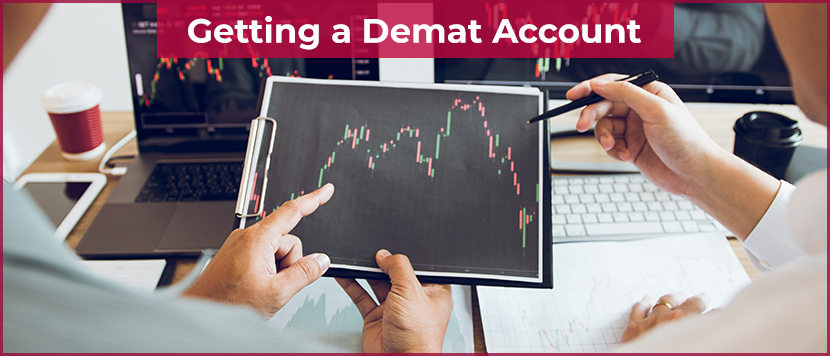How to Protect Demat Accounts from Fraud
Demat & Trading Accounts - Types of charges applicable & how to save on those

A free demand account normally refers to an account that has zero account opening charges, which is mandated by SEBI. When you open a demat account, there are a number of costs you commit, including when the demat account is idle. Demat account charges apply to a plethora of services offered by the DP.
The demat account is typically linked to a trading account on one side and a bank account on the other. Just like your demat account has certain in-built costs, your trading account also has costs. The only difference is that trading account costs nothing if the account is idle but costs only apply to actual transactions on the stock exchange. On the other hand, demat account attracts charges when it is idle and also when there are transactions.
Demat account charges you commit when you open demat account
Investors open their demat account with a depository participant (DP). The DP is affiliated either to NSDL or CDSL or both. There are a number of costs in operating a demat account.
-
As per SEBI regulations, the DP cannot charge you for demat account opening. Similarly, the DP cannot charge you for any credits into your demat account. These were chargeable services in the past.
-
The key operating cost of a demat account is the annual maintenance charge (AMC). There is no fixed rate but typically it varies from Rs.400 to Rs.900 per year. These charges automatically get debited to your linked bank account on an annual basis. This AMC is payable even if the account is idle. However, if your holdings are below Rs.2 lakhs in value, you can opt for a BSDA (Basic Services Demat Account), which entails a nominal AMC cost.
-
DPs are charged by NSDL and CDSL for each debit to the DP account and that cost gets passed on to the demat account holder. In case the broker is also the DP, this amount gets charged to your trading ledger.
-
In addition, the DP also charges for dematerializing physical certificates on a per folio basis. DPs also charge a nominal charge for physical transaction statements.
-
Be cautious that the DP does impose penal charges on you. For example, rejection of DIS, discrepancy in DRF (demat request form), cheque bounce, ECS bounce can all attract heavy penalties.
The moral of the story is to reduce your debits to the demat account, avoid penal charges and opt for BSDA account when your holdings are below Rs.2 lakhs.
Trading account has costs when you execute transactions
While demat account is the bank for securities, the trading account executes transactions for buy and sell. Trading account only entails transaction charges; nothing is charged if the trading account is idle. Here are some of the transaction charges.
-
When you buy or sell securities, the broker charges commission for the service. There are various models for brokerage and these are clearly mentioned in the trading agreement that you sign with the broker. Make it a point to read the fine print. Brokerage can be fixed, flexible, variable or even on a per lot basis.
-
An important component of trading cost is the Securities transaction tax (STT). The STT is higher for delivery trades and lower for intraday and F&O trades. STT is levied on value traded so you pay STT even on zero brokerage transactions. In addition, the exchange charges a nominal transaction charge on every transaction while SEBI charges turnover fees on a fixed slab basis.
-
Since broking is a service the goods and services tax (GST) is applicable at the rate of 18% on the value of the brokerage plus transaction charges. In addition, there is also the stamp duty payable at the rate applicable in that particular state.
-
It costs to transfer funds to your trading account. While NEFT and RTGS don’t entail any cost, IMPS transactions entail a cost and payment gateways charge for use of the gateway. These are debited to your trading ledger.
Check: Difference between Demat Account and Trading Account
Focus on low cost broking, don’t churn too often and fund your trading account using NEFT or UPI. The reason to know these costs is that they jointly determine your trading break-even point. What you earn on a net basis matters more than what you earn on a gross basis!
Discover more of what matters to you.





